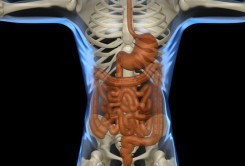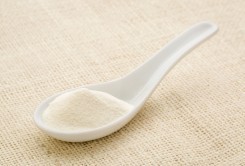Brenda Watson's Blog, page 9
January 12, 2015
Antibiotics During Pregnancy Increase Risk for Childhood Obesity

Antibiotic overuse is a problem that I discuss on a regular basis. One of the most detrimental effects of antibiotic overuse is the increase in obesity it is thought to contribute to. Dr. Smith recently blogged about the use of antibiotics during early infancy and its link to obesity later in life. A recent study published in the International Journal of Obesity adds to this research, finding that children who were exposed to antibiotics during the second or third trimester of pregnancy were at a higher risk of being obese at age seven. Infants born to mothers who delivered by Cesarean section were also at increased risk for obesity during childhood.
Of 727 mothers enrolled in the study, 436 were followed until the children reached age seven. Sixteen percent of the mothers used antibiotics during the second or third trimesters, which put them at an 84 percent increased risk for obesity compared with those children who were not exposed.
“Our findings should not discourage antibiotic use when they are medically needed, but it is important to recognize that antibiotics are currently overprescribed,” noted Noel Mueller, PhD. “Our findings provide new evidence in support of the hypothesis that Cesarean section independently contributes to the risk of childhood obesity.”
I wrote about the effects of antibiotics on the development of obesity in my latest book, The Skinny Gut Diet. Antibiotics alter the gut microbes in ways that lead to the development of obesity. Researchers are discovering that the type of bacteria you have in your gut determines whether or not you will be more likely to gain weight.
Setting up a healthy balance of gut bacteria early in life—and maintaining it throughout life—looks to be one of the best ways to avoid the weight gain trap that currently plagues two-thirds of the United States. Vaginal birth, breastfeeding, antibiotic use only when absolutely necessary, and a healthy diet rich in fruits and vegetables will go a long way toward establishing a healthy balance of gut bacteria. Probiotic supplementation can also help to support this balance.
January 9, 2015
Depression Reconsidered as an Infectious Disease

Major depressive disorder is the most common type of depression and involves severe symptoms that interfere with an individual’s ability to work, sleep, study, eat, and enjoy life. Each year, about 6.7 percent of U.S. adults are affected by the condition, with women 70 percent more likely to be affected than men.
Scientists do not have a good handle on what actually causes depression. In some cases, a traumatic event can trigger its onset, but in other cases, no obvious trigger is evident. In a recent study published in the journal Biology of Mood & Anxiety Disorders, Turhan Canli, PhD, suggests that major depression be reconceptualized as an infectious disease.
Camli presents three arguments for why major depressive disorder should be considered an infectious disease:
Patients with major depressive disorder exhibit sickness behaviors such as loss of energy and feelings of illness. He sites inflammatory biomarkers as indicators of an illness-related origin.
Parasites, bacteria, and viruses are known to alter emotional behavior in infected individuals.
The human body is an ecosystem for microorganisms that are intricately related to the role of genetics.
“Deliberately speculative, this article is intended to stimulate novel research approaches and expand the circle of researchers taking aim at this vexing illness,” noted Canli.
Dr. Smith and I have blogged on this topic before. A number of studies point to alterations of mental status being linked to inflammation that originates from an infectious process somewhere in the body (often, the gut). This finding has the potential to greatly change how depression is researched and treated. I hope that others listen to Dr. Canli’s recommendations, which are currently way ahead of most others in his field.
January 7, 2015
Proton Pump Inhibitors Decrease Gut Microbial Diversity

Proton pump inhibitors (PPIs) are one of the most commonly prescribed medications in the United States, earning billions of dollars for pharmaceutical companies. PPIs markedly decrease the production of stomach acid as a treatment for conditions in the upper digestive tract such as acid reflux, ulcers, and Helicobacter pylori infection. While these medications are sometimes necessary in the short term, long-term use has been associated with a number of adverse effects, including a 74 percent increased risk for Clostridium difficile infection according to a five year follow-up study of 100,000 patients taking a proton-pump inhibitor daily.1
In a recent study published in the journal Microbiome, researchers explored a possible explanation for the link between PPI use and C. diff infection.2 They found that after 28 days of either low- or high-dose PPI treatment in healthy individuals, the diversity of microbes in the gut was decreased in a similar way as is found in individuals who are infected with C. diff for the first time.
C. difficile infection occurs when gut microbial diversity is decreased.3 When diversity is down, the pathogenic C. diff can more easily gain the upper hand. In this study PPI use reduced microbial diversity, which helps to explain how PPI use is associated with C. diff infection.
“Evidence has been mounting for years that long-term use of proton-pump inhibitors poses increased risks for a variety of associated complications, but we have never really understood why,” noted John DiBaise, MD, lead researcher. “What this study does for the first time is demonstrate a plausible explanation for these associated conditions.”
While more studies are needed to work out how the bacterial diversity decreases, two main mechanisms are postulated in this study:
Increased bacterial load entering the colon
Changes in dietary proteins entering the colon
In a previous study by Kanno, et al, PPI use increased all groups of fecal bacteria they looked at with the exception of decreased Bifidobacterium.4 So when the protective diversity of bacteria are decreased by PPIs, there will be an increased load of bacteria entering the colon that knock out many of the beneficial bacteria. This is seen in C. diff patients and also in patients with small-intestinal bacterial overgrowth (SIBO).
A change in dietary proteins entering the colon, triggered by reduced stomach acid (and reduced digestion of proteins) can increase C. difficile growth by providing certain amino acids that may increase C. diff growth.
In addition, antibiotic use in vivo has been found to increase sialic acid in the gut, a favored catabolite of C. diff that is strongly associated with C. diff bacterial load.5 Antibiotics are often used in conjunction with PPIs, especially when treating H. pylori.
If this applies for PPIs, what about the senior citizens and people who are genetically predisposed to hypochlorhydria (low stomach acid) with age? It is likely they are also at increased risk for C. difficile infection and/or SIBO especially when treated with broad spectrum antibiotics and PPIs.
In addition to increased risk for C. diff, long-term use of PPIs has been linked to iron, calcium, and vitamin B12 deficiencies, low magnesium levels, osteoporosis-related bone fractures, small intestinal bacterial overgrowth, and community-acquired pneumonia. The risk of C. diff infection with long-term PPI use has prompted the Food and Drug Administration to require a warning on the product insert that states PPIs may increase the risk of C. difficile infection.
If you have acid reflux, talk to your doctor about controlling the condition with non-pharmacological means. There are many lifestyle changes you can make that will help to keep this condition under control without having to use these potentially dangerous medications.
References
Linsky A, Gupta K, Lawler EV, et al., “Proton pump inhibitors and risk for recurrent Clostridium difficile infection.” Arch Intern Med. 2010 May 10;170(9):772-8.
Seto CT, Jeraldo P, Orenstein R, et al., “Prolonged use of a proton pump inhibitor reduces microbial diversity: implications for Clostridium difficile susceptibility.” Microbiome. 2014; 2: 42.
Antharam VC, Li EC, Ishmael A, et al., “Intestinal dysbiosis and depletion of butyrogenic bacteria in Clostridium difficile infection and nosocomial diarrhea.” J Clin Microbiol. 2013 Sep;51(9):2884-92.
Kanno T, Matsuki T, Oka M, et al., “Gastric acid reduction leads to an alteration in lower intestinal microflora.” Biochem Biophys Res Commun. 2009 Apr 17;381(4):666-70.
Ng KM, Ferreyra JA, Higginbottom SK, et al., “Microbiota-liberated host sugars facilitate post-antibiotic expansion of enteric pathogens.” Nature. 2013 Oct 3;502(7469):96-9.
January 6, 2015
Will YOU Win My New Year, New You Challenge?

There is still time to submit your 2015 health resolutions! The New Year, New You Challenge is going on now through January 15th on my Facebook page, and you could be one of three lucky winners to receive individual support from ME along with loads of great prizes.
Whether you want to eat healthier for a balanced gut, shed those unwanted pounds, exercise more, or simply improve your health in the coming year, I want to hear about it. And not just hear about it—I want to help you meet those goals.
On January 15 I will pick my top three favorite submissions and spend two months personally helping you meet your Skinny Gut goals, beginning with a 30-minute initial consultation and followed by a weekly phone call and email check-ins to track your progress and offer suggestions and support. In addition, winners of the New Year, New You Challenge will also receive a copy of my latest book, The Skinny Gut Diet—along with these fantastic prizes!
Your choice of a Ninja® Pro blender or slow cooker
A stool test to assess your gut health
An at-home fermentation kit
My The Road to Perfect Health and Gut Solutions books
A Skinny Gut shopping list and digital food/mood tracker!
Are you ready to kick off the New Year with your healthiest, happiest gut? I can’t wait to hear your 2015 health resolutions and help you get started! Visit the New Year, New You Challenge Facebook page for complete contest rules.
January 5, 2015
Aluminum and Alzheimer’s disease—The Jury is Still Out

You may have heard, at one time or another, that aluminum exposure increases your risk for Alzheimer’s disease. Until recently, this link has been swept under the rug, so to speak. There are no conclusive results when it comes to the role of aluminum on the disease, yet all the while, some researchers have continued to find harmful effects of aluminum on the brain.
One such researcher, Christopher Exley, PhD, has devoted his life to the study of aluminum. In his paper recently published in the journal Frontiers in Neurology, he says that it may be inevitable that aluminum plays a role in Alzheimer’s disease. He talks about the lack of awareness around such a risk:
“We are all accumulating a known neurotoxin in our brain from our conception to our death. Why do we treat this inevitability with almost total complacency?”
Aluminum is the third-most abundant element of the Earth’s crust, and is commonly used throughout the world. Thus, humans are widely exposed to the element, both in the natural environment and through the use of everyday household items. Humans accumulate aluminum in every cell in the body—an accumulation that is increasing as time goes on—and yet there is not yet an identified beneficial role for aluminum in the body.
Exley’s paper is a call to action:
“How do we know that Alzheimer’s disease is not the manifestation of chronic aluminum toxicity in humans? Why are we choosing to miss out on this opportunity? Surely the time has come to test the aluminum hypothesis of Alzheimer’s disease once and for all?”
He has a good point. Studies have not refuted the connection. They simply haven’t confirmed it. Exley says that industry propaganda and political interference play a huge role in disguising the “inevitable role played by human exposure to aluminum in neurodegenerative diseases.” That is, there is a lot of money to be made in the aluminum industry. If we knew how detrimental it was, entire industries would be disrupted. They have an interest in our not finding out about it.
Exley suggests the non-invasive method of drinking silicon-rich mineral water as being a potential solution for the accumulation of aluminum in the body. Silicon is thought to promote the excretion of aluminum out of the body. He calls for more studies to determine just how much water and what silicon concentration is required to significantly lower body burdens of aluminum. In a small study of individuals with Alzheimer’s disease, they were able to demonstrate removal of aluminum by daily consumption of one liter of silicon-rich mineral water at 30 mg/L of “silica.” Silicon-rich bottled mineral water is widely available, and is usually labeled with the silica concentration.
January 2, 2015
Fish Intake Linked to Better Antidepressant Response

The mental health benefits of high fish intake are well known, particularly when it comes to fatty fish high in the omega-3s EPA and DHA. For this reason, some researchers have investigated the effects of fish and fish oil intake on mental health conditions, including depression. The main medication to treat depression—select serotonin reuptake inhibitors (SSRIs)—does not work in about half of the people taking them. Researchers decided to investigate whether fish intake played a role in the response rate to SSRIs in patients with depression.
In a study presented at the European College of Neuropsychopharmacology congress in Berlin, researchers found that, indeed, those people who ate the most fish responded best to the SSRIs. They compared 70 patients with depression to 51 healthy controls. They measured their fatty acid and cortisol (stress hormone) levels. They found that those who ate fatty fish at least once a week had a 75 percent chance of responding to antidepressants compared to 23 percent chance in those who never ate fatty fish.
“These findings suggest that measures of fatty acid metabolism, and their association with stress hormone regulation, might be of use in the clinic as an early indicator of future antidepressant response,” noted Roel Mocking, lead researcher. “Moreover, fatty acid metabolism could be influenced by eating fish, which may be a way to improve antidepressant response rates.”
The researchers are also investigating the association between fish intake and drug response in other mental health conditions, such as post-traumatic stress disorder and schizophrenia. Larger scale studies are needed to confirm the association and determine whether the link is causal. I look forward to hearing more about this research in the future. In the meantime, increase your intake of fatty fish low in mercury, such as salmon, sardines, and herring. Or, take a purified fish oil supplement. There are so many healthy reasons to increase your omega-3 intake.
December 31, 2014
Olive Best Oil for Frying, According to Study

With so many choices of oils that can be used for cooking, it’s hard to know which one is best. A number of factors need to be taken into account, including cooking temperature, nutrient content, and taste. In a recent study published in the Journal of Agricultural and Food Chemistry, researchers tested four different refined oils: olive, corn, soybean, and sunflower. After heating and using the oil ten times, they found that olive oil performed best against the others in stability and nutrition. Olive oil was the most stable oil when fried at 320 and 374 degrees while sunflower oil degraded most rapidly at 356 degrees.
Due to the chemical structure of oils, they degrade at different rates. Some oils are more stable than others. When oils reach a certain temperature, known as their smoke point, they begin to break down, giving off new chemicals including harmful free radicals.
Olive oil is a monounsaturated oil, which means that it only has one (“mono”) unsaturated bond in its structure. Unsaturated bonds are not as stable as saturated bonds, which is why saturated fats tend to be the most stable. Corn, soybean, and sunflower oils are polyunsaturated oils, which means that they are structurally less stable than olive oil.
Because they didn’t test extra virgin or virgin olive oils, which may have differing stabilities, refined olive oil, which will be labeled as “extra light olive oil,” is recommended based on the results of this study.
December 29, 2014
Cash Register Receipts Major Source of BPA Exposure

If you are like most people, you receive cash register receipts on a regular basis. You may or may not know that those receipts are made of a special type of thermal paper that contains high amounts of the hormone disrupting chemical bisphenol A (BPA). In a study recently published in the Public Library of Sciences ONE journal, researchers discovered that BPA is transferred from receipts to hands, and exposure is increased when using skin care products such as hand sanitizers followed by eating fat-containing foods.
“Our research found that large amounts of BPA can be transferred to your hands and then to the food you hold and eat as well as be absorbed through your skin,” noted Frederick vom Saal, PhD, lead researcher. “BPA from thermal papers will be absorbed into your blood rapidly; at those levels, many diseases such as diabetes and disorders such as obesity increase as well. Use of BPA or other similar chemicals that are being used to replace BPA in thermal paper pose a threat to human health.”
Think of how many times you have sanitized your hands, grabbed your receipt, and sat down to eat a meal with your hands. The researchers believe that skin care products strip the hands of their natural protective oils, making it easier to absorb the chemical. Unless you need your receipt, you may want to consider declining it when you can. And avoid using hand care products before shopping if you plan to keep your receipt.
I have blogged many times about the dangers of BPA. For access to those blogs, click here.
December 26, 2014
U.S. Sugar Consumption on the Rise

Although it might not surprise you, results of a new study show that added sugar consumption has risen over 30 percent (228 to 300 calories per day) in the last 30 years. In children, added sugar consumption has increased about 20 percent (from 277 to 329 calories per day). These increases are despite the recent declines in sugar consumption that have taken place.
“The thirty percent increase is only the average consumption among adult Americans,” noted Elyse Powell, lead researcher. “Even more alarming is the fact that the top 20 percent of adult consumers are eating 721 calories from added sugar per day, on average. This is equally alarming for the top 20 percent of children who are consuming on average 673 calories from added sugar per day.”
Wow! That’s a lot of sugar.
Recent efforts by the FDA to include added sugar on nutrition labels will hopefully prove fruitful. This country is facing a health epidemic that is fueled by sugar. In my opinion, added sugar has no place in the diet whatsoever. It is a nutrient-poor addition to the diet that only comes with negative effects disguised as a sweet treat. Don’t fall for it. Read your labels. Until nutrition labels are changed (and if they are changed), you can find added sugars in the ingredients list. But beware of the many names under which it might be hidden. for a list of 56 alternative names of added sugar.
Foods high in added sugar are usually energy dense, nutrient poor foods. Meaning, they pack a lot of calories, but few, if any, nutrients. Opt for fresh foods that have not been processed for the most nutrient bang for your buck.
December 24, 2014
Fiber Supplement Shifts Gut Bacteria Toward Favorable Balance

Fiber supplements are known for a range of benefits, including the improvement of bowel regularity, regulation of healthy blood sugar levels, and reduction of appetite. Another amazing benefit of some fibers is the ability to favorably alter the balance of gut bacteria. A recent study published in the journal Microbiome analyzed the ability of two types of fiber—polydextrose and soluble corn fiber—to alter the gut bacteria of a group of healthy men.1
Twenty healthy men eating an average of 14 grams of daily fiber were given snack bars containing 21 grams of polydextrose fiber, bars containing 21 grams of soluble corn fiber, or bars with no fiber for 21 days. Stool samples were collected and analyzed using a method of DNA analysis called 454 pyrosequencing, which examines the full range of genetic information to avoid missing certain bacterial groups that sometimes go undetected using 16S DNA sequencing.
The researchers found that those participants who ate bars supplemented with polydextrose or soluble corn fiber had increased amounts of Bacteroidetes and decreased amounts of Firmicutes. These changes have also been found in studies evaluating the effects of weight loss and obesity on the gut microbiota.2
“This was of particular interest to us because other research has shown that having more Bacteroidetes may be beneficial because the higher that proportion is, the individual tends to be leaner,” noted Hannah Holscher, PhD, RD. “With higher Firmicutes, that individual tends to be more obese. It’s an exciting shift and helps to drive researchers to study these fibers as part of a weight-loss diet.”
After the fiber was discontinued the bacteria levels went back to their previous levels, suggesting that fiber supplementation needs to be continued to maintain healthy changes in gut bacteria. And of course, the researchers recommend that a healthy diet, high in fibrous foods like fruits, vegetables, and legumes be eaten daily to fully support a healthy balance of gut bacteria.
Soluble corn fiber has been found to have prebiotic effects in a previous study by the same research group.3 Other soluble fibers are also known for their prebiotic effects. Acacia, inulin, and oligofructose fibers also favorably alter the bacteria in the gut.4,5 Soluble fibers are rich in polysaccharides that act as food for the good gut bacteria, helping to increase their populations and produce beneficial compounds such as short chain fatty acids (SCFAs), which act as fuel for the cells that line the intestine.
Some soluble fibers, such as the ones in this study and acacia fiber, are better tolerated because they cause less gas, bloating, and abdominal discomfort than inulin-type fibers. In addition to the SCFAs feeding the gut lining, they also sit on receptors of the white blood cells and modulate immunity in a very beneficial and profound way.6
References
Holscher HD, Caporaso JG, Hooda S, et al., “Fiber supplementation influences phylogenetic structure and functional capacity of the human intestinal microbiome: follow-up of a randomized controlled trial.” Am J Clin Nutr. January 2015;ajcn.092064.
Ley RE, Turnbaugh PJ, Klein S, et al., “Microbial ecology: human gut microbes associated with obesity.” Nature. 2006 Dec 21;444(7122):1022-3.
Hooda S, Boler BM, Serao MC, et al., “454 pyrosequencing reveals a shift in fecal microbiota of healthy adult men consuming polydextrose or soluble corn fiber.” J Nutr. 2012 Jul;142(7):1259–65.
Cherbut C, Michel C, Virginie R, at al., “Acacia gum is a bifidogenic dietary fibre with high digestive tolerance in healthy humans.” Microbiol Ecol Health Dis. 2003; 15(1):43–50.
Kolida S, Tuohy K, and Gibson GR, “Prebiotic effects of inulin and oligofructose.” Br J Nutr. 2002 May;87 Suppl 2:S193–7.
Maslowski KM and Mackay CR, “Diet, gut microbiota and immune responses.” Nat Immunol. 2011 Jan;12(1):5–9.



